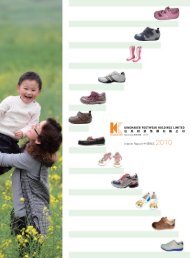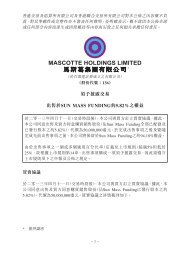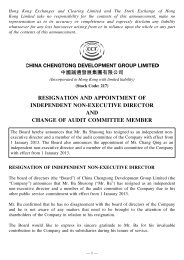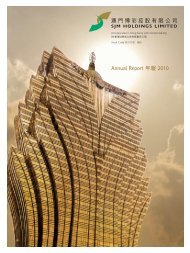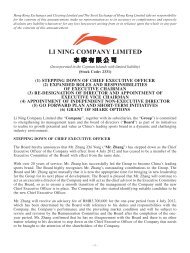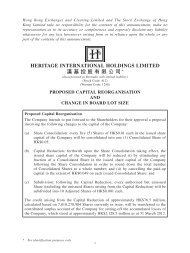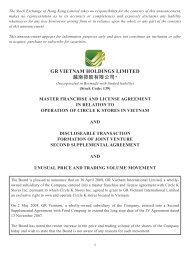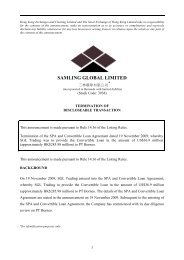年報 - HKExnews
年報 - HKExnews
年報 - HKExnews
You also want an ePaper? Increase the reach of your titles
YUMPU automatically turns print PDFs into web optimized ePapers that Google loves.
NOTES TO THE FINANCIAL STATEMENTS<br />
<br />
31 March 2010 <br />
TEXWINCA HOLDINGS LIMITED ANNUAL REPORT 2010 <br />
38. FAIR VALUE HIERARCHY<br />
The Group uses the following hierarchy for determining and<br />
disclosing the fair value of financial instruments:<br />
Level 1: fair values measured based on quoted prices<br />
(unadjusted) in active markets for identical assets<br />
or liabilities;<br />
Level 2: fair values measured based on valuation<br />
techniques for which all inputs which have a<br />
significant effect on the recorded fair value are<br />
observable, either directly or indirectly;<br />
Level 3: fair values measured based on valuation<br />
techniques for which all inputs which have a<br />
significant effect on the recorded fair value are not<br />
based on observable market data (unobservable<br />
inputs).<br />
As at 31 March 2010, the financial instruments measured<br />
at fair value held by the Group comprised of equity<br />
investments at fair value through profit or loss and was<br />
classified as Level 1.<br />
During the year ended 31 March 2010, there were no<br />
transfers of fair value measurements between Level 1 and<br />
Level 2 and no transfers into or out of Level 3.<br />
39. FINANCIAL RISK MANAGEMENT OBJECTIVES<br />
AND POLICIES<br />
The Group’s principal financial instruments, other than<br />
derivatives, comprise bank loans and overdrafts, and<br />
cash and short term deposits. The main purpose of<br />
these financial instruments is to raise finance for the<br />
Group’s operations. The Group has various other financial<br />
assets and liabilities such as trade receivables and trade<br />
payables, which arise directly from its operations.<br />
The Group also enters into derivative transactions,<br />
including principally forward currency contracts. The<br />
purpose is to manage currency risks arising from the<br />
Group’s operations and its sources of finance.<br />
The main risks arising from the Group’s financial<br />
instruments are interest rate risk, foreign currency risk,<br />
credit risk and liquidity risk. The Board reviews and agrees<br />
policies for managing each of these risks and they are<br />
summarised below. The Group’s accounting policies<br />
in relation to derivatives are set out in note 2.4 to the<br />
financial statements.<br />
38. <br />
<br />
<br />
<br />
<br />
<br />
<br />
<br />
<br />
<br />
<br />
<br />
<br />
<br />
<br />
<br />
<br />
<br />
<br />
39. <br />
<br />
<br />
<br />
<br />
<br />
<br />
<br />
<br />
<br />
<br />
<br />
<br />
2.4<br />
122



